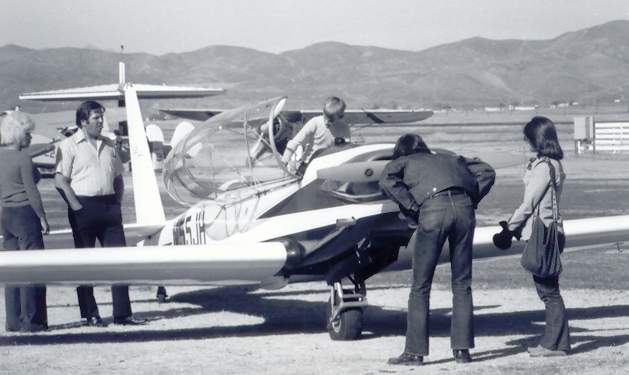I was wondering what the advantages are between Conventional gear and Tricycle gear.
The fundamental difference, say, in landing, where it really is noticeable, is that trikes have the CG forward of he mains, and taildraggrs have the CG aft of the mains.
If you're not 100% straight, any plane (without trailing-link gear)will pivot on whatever main wheel hits first, or is more forward. With nosewheel airplanes, that swinging movement, within limits, is not a big deal, because the CG will want to move towards the centerline, taking the nose with it. This makes them sort of center themselves as you touch down and start to roll. It's not an idiot-proof setup, but it helps.
Taildraggers have the CG behind the mains, which means if you touch down crooked, or it tries to point into the wind as you roll and you don't or can't correct it in time, the
tail will want to come around to the front, and the nose will move
away from the centerline. The problem with this is pretty obvious.
I already know Tricycles are better with taxiing and Conventional's have less drag and higher prop clearance.
There is a lot of good to be said about maneuvering tailwheels (once you get the hang of it), but it is also true that many trikes are very maneuverable. The disadvantages of tailwheels are:
Visibilty (although most are bearable, and some are real good, like the Champ). This can also be a problem as you take off or land, but only for brief moments (with some but notothers).
Wind. Strong wind can be a problem taxiing any airplane, but taildraggers, again because of the CG position, tend to "weathervane" more. You really do have to "fly it until it's tied down", especially a small, light taildragger.
The drag thing is not significant, because any amount of drag can be overcome with power. A lot of little taildraggers are extremely draggy, and they fly fine, albeit slowly. But put a nosewheel on one, as they did with the excellent Pacer, and it does slow down even more. Unless you put a bigger engine on it. Likewise, take a Cessna 150 or whatever and put a tailwheel on it, and it will be lighter and faster, but not very much.
One nice thing about tailwheels is that they are easier and less expensive to maintain. Although tail wheels take a lot of abuse, they are usually simpler: no gas or hydraulic pistons, no fancy linkages, and they don't interface with the engine mounts. And if your tailwheel or its linkage breaks, or the tire goes flat, as you take off or land, it is usually less of a problem than with a nosewheel!!
The in-fight characteristics are usually not much different, and with taildraggers, any differences have more to do with the antiquated design of some older types and less to do with the positon of the CG (which is usually about where the center of lift of the wing is, just like with nosewheel planes).
Oh and which do you think is cooler?
As stated above, it's a matter of taste, really... most of the horror stories you hear about taildraggers come from experiences by pilots transitioning from nosewheels to tailwheels. Most of the gushing you hear about the joy of flying taildraggers comes from people who were attracted to them before even trying one (like me), or people who learned on them (like the guy who taught me how to fly one). I think they're cooler, but that's just me. It really doesn't have much to do with them being "trickier" or whatever, I can't really put my finger on it.



 .
.



 In the PA 12, from my seating position I couldn't hardly use them, but then, didn't really need them much either. Once or twice I had to get on them and I had a heck of a time with finesse because I would basically have to use my thigh muscles pushing levering a hyperextention at my ankles off the balls of my feet on the rudder pedals, which made things a bit sketchy. I've been in a few other planes with heel brakes, mostly Pipers that had me in the same position. A buddy had a Luscombe, but it didn't have brakes...
In the PA 12, from my seating position I couldn't hardly use them, but then, didn't really need them much either. Once or twice I had to get on them and I had a heck of a time with finesse because I would basically have to use my thigh muscles pushing levering a hyperextention at my ankles off the balls of my feet on the rudder pedals, which made things a bit sketchy. I've been in a few other planes with heel brakes, mostly Pipers that had me in the same position. A buddy had a Luscombe, but it didn't have brakes...